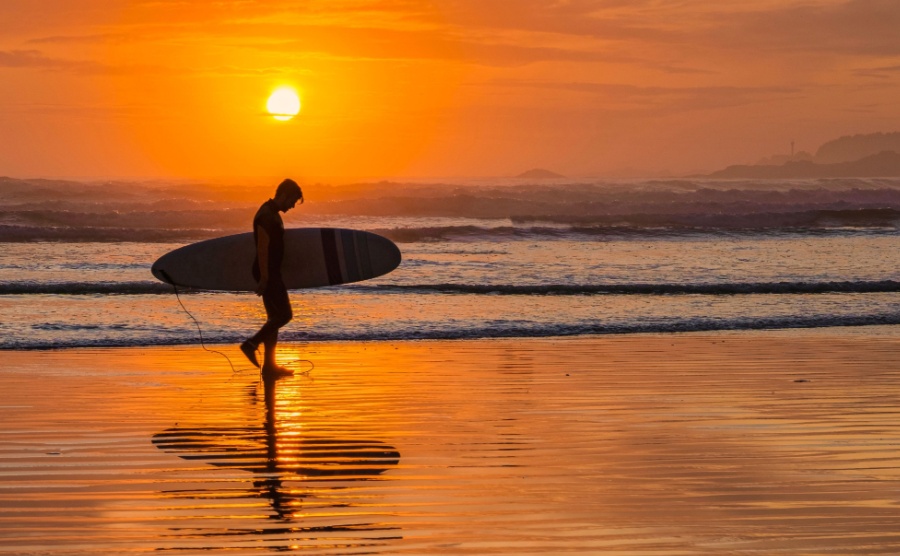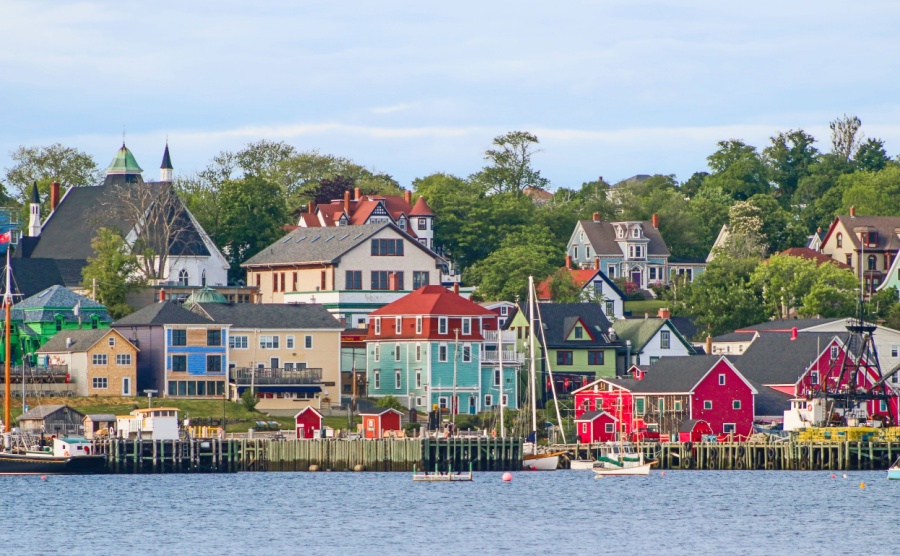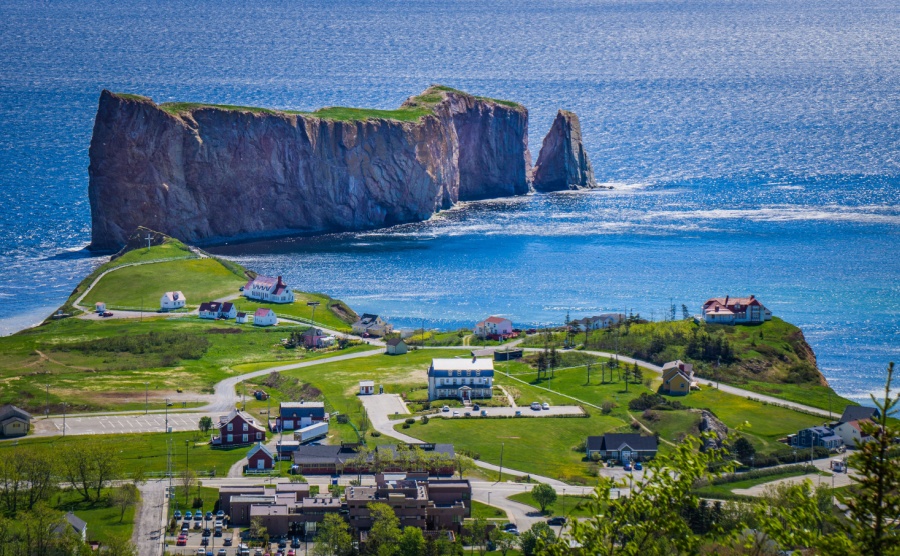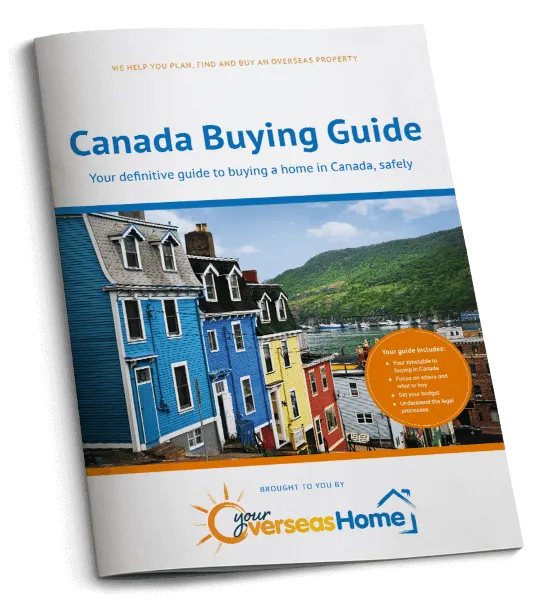We may associate it with the mountains, but Canada is also home to the world’s longest coastline – totalling 202,080 kilometres. Today, we’re going to look at five characterful towns dotted along it. Perhaps, you’ll want to call one of these towns home. Or, you’ll just pop to one of these towns for a seaside getaway.
1. Tofino, British Columbia
Located on Vancouver Island’s rugged west, Tofino has an incredible choice of beaches. Crescent-shaped Cox Bay Beach is home to most of Tofino’s surfing competitions, while Long Beach stretches for 16 kilometres and is perfect for a stroll, and MacKenzie Beach’s gentle waves make it popular with families.
As well as lazing on the beach and swimming in the sea, Tofino is excellent for surfing with options for every skill level, fishing for Chinook salmon and Albacore tuna, and whale watching.
Hiking is a popular pastime in Tofino, with many trails located in the Pacific Rim National Park Reserve. For something special, head on a 20 minute flight or 1.5 hour boat ride to the geothermal hot springs within Maquinna Marine Provincial Park.
The community is close knit with a strong art and culture scene. You can see and enjoy sculptures, independent shops, markets, open mic nights and a jazz festival in late June.
Due to its remote location, the cost of living can be higher, with groceries, utilities and transport pricier than other seaside towns. But locally produced foods are brilliant.
Population: 2,500
Weather: Tofino experiences a wet, cool climate with highs of 19°C in summer.
Nearest city: Victoria, approximately 320 kilometres away.
Property: Prices are competitive, reflective of a small supply.
2. Lunenburg, Nova Scotia
Lunenburg’s Old Town is one of only two urban communities designated as a UNSECO World Heritage site in north America. Founded in 1753, it was one of Britain’s earliest attempts to create a settlement in Nova Scotia. As such, over 70% of the buildings are colonial buildings from the 18th and 19th centuries, giving the town its quaint old-fashioned charm. It has an especially colourful waterfront lined with restaurants, breweries and artisan shops. The lifestyle is laidback with plenty of opportunity to feast on seafood, enjoy events, go sailing and kayaking. While some it has appeal as a tourist town, the maritime industry is still a huge part of the community.
Population: 2,500
Weather: June to September sees highs of 22°C. January is quite cold averaging 6°C.
Nearest city: Halifax, approximately 100 kilometres away.
Property: Prices are competitive for the historic buildings. The newer properties and ones away from the centre of town are considerably more affordable.
3. Shediac, New Brunswick
The “Lobster Capital of the World” goes out of its way to secure the title: it has a massive 90-ton sculpture and an annual July festival to celebrate the red-bodied creatures. And even if the lobsters don’t win you over, it is home to Parlee Beach, boasting of the warmest saltwater in all of Canada. As well as enjoying a warm dip, it’s a great spot for volleyball and even has onsite camping. While the Pointe-du Chêne Wharf is a tourist magnet and busy marina. Shediac’s bustling downtown is lined with shops, restaurants, bars and a celebrated Sunday Market.
Population: 6,500
Weather: Year round, skies can be cloudy, and temperatures vary from -12 to 24°C with consistent rain. June through to September is the sunniest with highs of 24°C.
Nearest city: Moncton, approximately 25 kilometres away.
Property: Waterfront homes, especially those by Parlee Beach, are sought-after and command high prices.
Download the free How to Emigrate guide for tips on making the move to Canada.
4. Gibsons, British Colombia
Just a 30-minute ferry ride from West Vancouver to the Langdale Ferry Terminal and you end up in Gibsons, on Canada’s Sunshine Coast. If you’re a fan of the CBC TV show The Beachcombers, you may already be familiar with Gibsons, as it is used as a filming location, including the iconic restaurant Molly’s Beach. Today, Gibsons is a haven of outdoor activity, whether you want to spend your days beachcombing, mountain biking, cycling, golfing, fishing or snowshoeing. Plus, the town has a thriving art and culture scene, with a gallery called the Kube and the Gibsons Public Art Gallery being highlights. In summer, there ia a Seaside Market every Saturday.
Population: 4,758
Weather: The temperature varies between 2°C and 23°C. June through to September is the warmest time of year and is best for a dip. Winters can feel very long, cold and wet.
Nearest city: Vancouver, approximately 40 kilometres away.
Property: While waterfront properties are expensive, there are also more affordably priced townhouses and family homes.
5. Percé, Quebec
Percé has a vibe that is less laidback beach town and more impressive natural paradise. Situated on the tip of the Gaspé Peninsula, Percé is renowned for its stunning natural beauty and the iconic Percé Rock, a massive limestone formation rising from the Gulf of Saint Lawrence. The town is a haven for nature enthusiasts, offering whale watching, birdwatching at Bonaventure Island, and hiking trails with breathtaking views. Plus, the town’s charming streets are lined with artisan shops, seafood restaurants, and cosy cafés, making it a delightful place to explore.
Population: 3,000
Weather: Summers are mild with highs around 20°C, while winters can be harsh, averaging 10°C.
Nearest city: Gaspé, approximately 70 kilometres away.
Property: Waterfront properties are highly desirable, with prices reflecting their prime location. More affordable options are available further inland.
Finally, you might also like:











